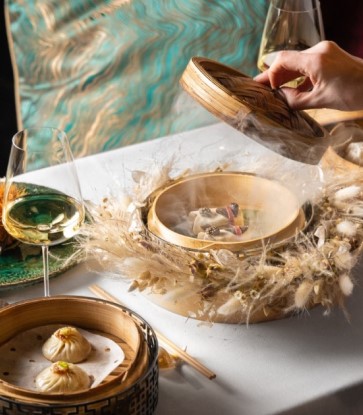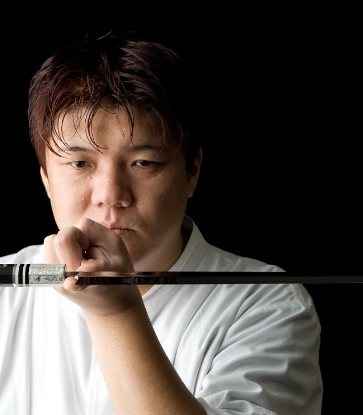Ever since the early stage of Chinese civilization, steaming has played an integral part in Chinese culinary culture. The earliest evidence comes from the Yin Dynasty (1600BC – 1046BC), in the form of a cooking equipment called “zeng.” Like a steaming basket, it’s perforated at the bottom and attached to another three-footed pot (“lik”) that's filled with boiling water. The food in the zeng is cooked through the steam rising from the lik.
How Steaming Works
The modern way of steaming usually employs a covered wok or pot with boiling water. The food is placed in a steaming rack which stands above the water, and is cooked through the steam trapped inside. Avoiding direct contact with water, the shape, flavors and nutrients of the raw ingredients are largely kept intact in the finished dish.

All About the Heat
The control of the heat and time is paramount to steaming: chefs usually go for high heat while preparing seafood, steamed buns and dim sum, medium heat with meat and low heat for steamed egg custard.
“High heat speeds up the cooking process of seafood to preserve its smooth flesh. On the other hand, low heat [combined with long cooking time] would ruin its texture,” says Chan.
A fish weighing a catty usually takes 12-15 minutes to cook on strong heat. As for buns and dim sum—with their filling usually cooked in advance—high-heat steaming helps stabilize their shape quickly. For instance, the beetroot and scallop dumpling at YinYue is made with avocado and mixed mushrooms and wrapped in a skin containing beetroot juice. Since the mushrooms are pan-fried, the cooking time is shortened to six minutes. As a result, the dumpling achieves the refreshing taste Chan desires as topped with pan-fried scallop and lemon peel.

“Low heat mostly applies to steamed egg custard only. It lets the protein in the egg solidify slowly, resulting in a silky surface that would be spoiled by overheating,” Chan noted with an extra tip to share: before cooking, cover the plate with cling film, piercing it several times. The film minimizes the egg’s exposure to steam, in turn making the custard even softer.

Once you have the basics of steaming down, pay attention to the utensil you use, as Chan reveals the benefits of a bamboo basket and a plate respectively.
“A bamboo basket is good at imparting and keeping the heat. In addition, the food would take on the fresh scent of bamboo after cooking. A plate blocks excessive steam and facilitates heat dissipation.”
While conventional wisdom suggests the basket is a better choice, Chan said the ingredient dictates which utensil to use. While the basket produces the best outcome for dim sum and buns, meat patty and fish wouldn’t set well in it. Their juice, along with the food's flavor, will also leak from the openings of the basket’s bottom.
“It’s like how people discard the water on the plate after steaming a fish. That’s actually the juice of the fish, which makes a great sauce. The best way is to reserve a part of the juice to mix with soy sauce. Otherwise the sauce would be composed of just soy and deprived of the natural fish flavor,” says Chan.





















